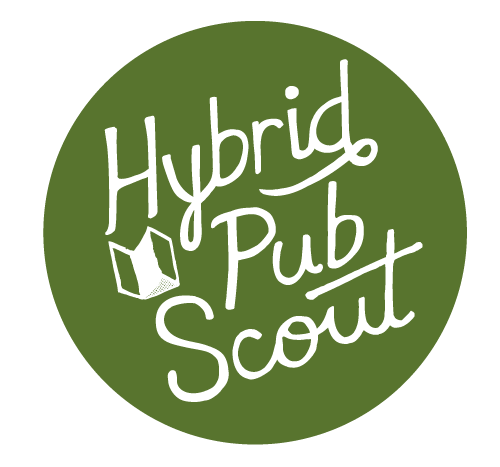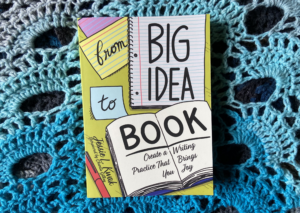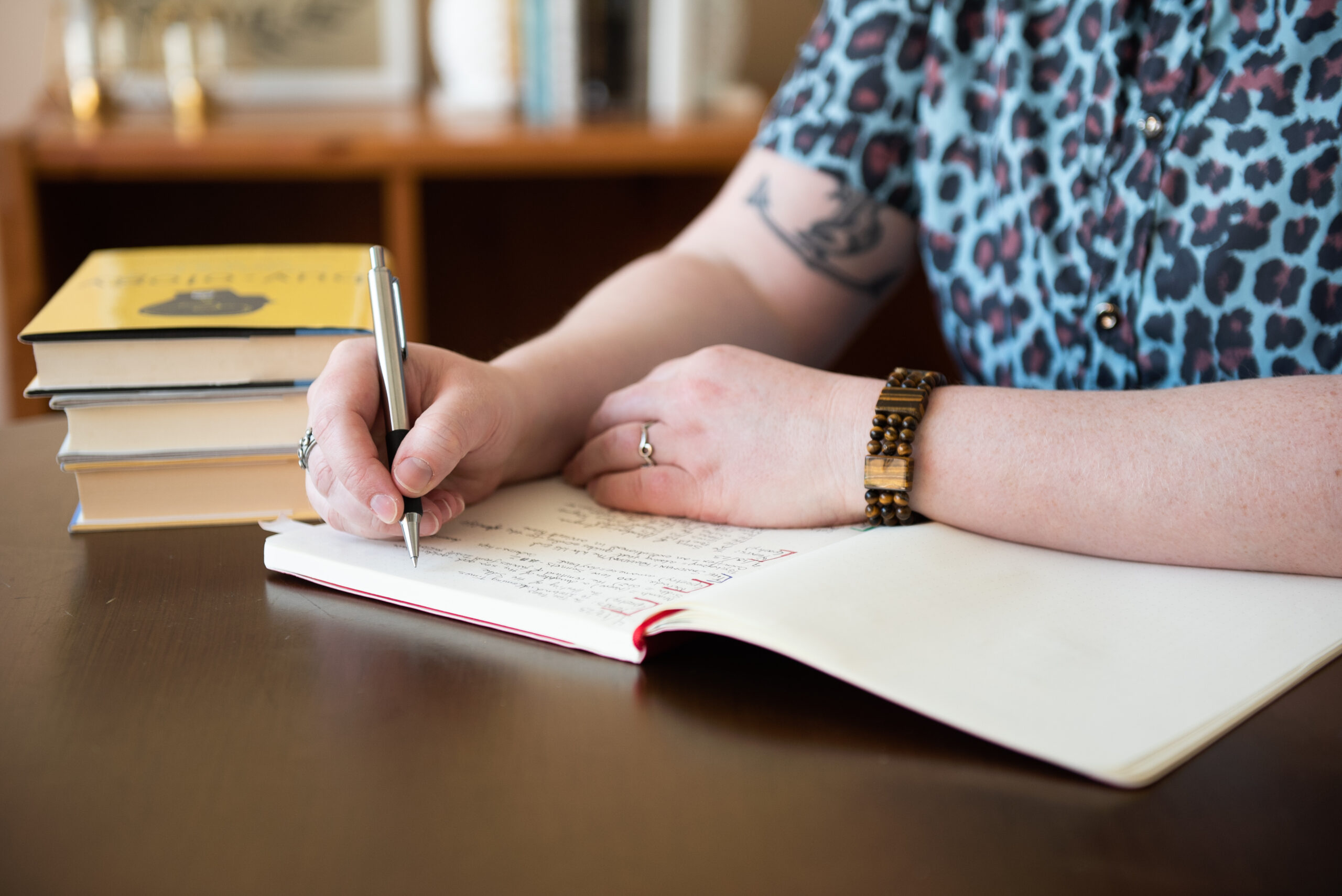Listen to Episode 59 with Jessie Kwak, author of From Chaos to Creativity and From Big Idea to Book.
When I found out that Jessie Kwak released a new book on writing books, I decided to order it straight from the source at Microcosm Publishing. From Chaos to Creativity serves as such an effective manual, I figured the ability to pick up one of her books and thumb through it for the tips I needed was worth the paper. Then last week, as I recuperated from a medical procedure, I thought I’d break into it to see what pearls it had to offer.
Listen to Episode 15 with Joe Biel, Founder and Manager of Microcosm Publishing.
As soon as I opened From Big Idea to Book: Create a Writing Process that Brings You Joy, I had to reach for my laptop and boot up Evernote. After reading From Chaos to Creativity, I should have known Jessie Kwak’s newest would be similarly packed to the gills with amazing quotes, vividly illustrated concepts, and a Matryoshka doll’s worth of book recommendations. It requires quite a bit more attention than an afternoon on the couch with no notetaking equipment in hand can afford.
This book is a great balance of practical exercises and psychological insights about different facets of the writing craft and process. It’s an excellent starting point for people who want guidance on their process of getting a book ready for publication, or even a midpoint for people who have done it before and want to sharpen their systems. In fact, it might be sufficient for many as a manual for the whole process (although, it is also redolent of recommendations to books on craft, creativity, and productivity).
In similar fashion as in From Chaos to Creativity, this book gives the reader ample space to be themselves and focus on what works best for them. “As I’ll be saying over and over and over in this book,” she says, “you do you.”
What You’ll Find in From Big Idea to Book
From Big Idea to Book is organized into the three major stages of work on a book and addresses issues faced by both fiction and nonfiction authors.
Planning
This book manages to walk an idiosyncratic line. Imagination and inspiration are not treated as elusive beasts to be tamed or to be dismissed as imaginary. The first chunk of the book includes ways to pin down ideas, then allow them to grow, change, or make room for different ones altogether.
Drafting
There is no sugar-coating how difficult it is to make it through the process of drafting an actual book; writers have to negotiate the unexpected behavior of characters, mental blocks waiting around unexpected bends in the plot, and corners where authors accidentally trap themselves. Fortunately, there are plenty of exercises and suggestions made for how to climb over, push through, or chart a new path.
Revising
The latter portion is for folks who want help during the last stretch, where the work is polished into something shiny and enticing. The revising section also includes a breakdown of different types of editors and where they fit into different stages of writing a book. She also discusses alpha readers and beta readers and how they can let writers see their book through the eyes of the people that will hopefully love it!
Key Takeaways and Tools
The following are three themes of From Big Idea to Book that really meant something to me.
The Value of Inverting One’s Thinking
A lot of the suggestions in this book invite the reader to think about different steps of the writing process from new perspectives. An early example is challenging the idea that idea generation, outlining, and plotting a book are different from “writing” a book. Under the header Planning is Writing, Jessie points out how many writers rush through the planning process because they have been taught word count is everything. She reminds us that activities like going for walks, talking through our ideas with friends, and even just staring into space, are all important parts of the writing process.
Another mental trick she mentions was suggested in one of her writer’s groups to someone who was struggling with being blocked: “What if you just tell yourself you aren’t a writer anymore?” The question was meant to inspire the person to express their creativity for a while in alternate ways, and to free them from the mental frameworks writers build around themselves that ultimately hold them back.
That particular idea hit me in a really personal way, because it was something I tried myself. All my life I’d had these ideas of what it was to be a writer inside my head—all the ways my life should work, the times of day I should write, the way I see the world. Then one day, I said, “What if I just am not a writer?”
Instead of depressing me, the thought freed me as if from handcuffs I’d lost the keys to years earlier. I went on to learn a ton about publishing business, marketing, and design—the things that go into creating books, websites, and other print and digital publications that don’t involve “being a writer.” Now that I’ve turned back to writing both fiction and nonfiction myself, I feel comfortable inhabiting a writer’s identity again. The lessons I’ve learned in the meantime have shown me there are many different ways to be a writer and to do the actual work. The possible amazing outcomes of flipping the way we think about ourselves and our work can’t be overstated
Practice Self-Examination—but in Moderation
Jessie suggests activities suggested at each point in the writing process from free writing to fully walking away from one’s desk. These activities are meant to get writers unstuck when they have a mental block or an element of their plot that makes sense. They can also help them empower the ideas that have the greatest go-power. However, there are limits to how much one can and should reflect before falling into the trap of overthinking. Kwak encourages readers to go through reflective exercises, but when the time comes to write—turn off all distractions and write.
One of my favorite topics discussed is how to write through drafts without stopping and revising as one goes, a struggle for many of us. A major theme is silencing the critical voice. Informed by the words of authors like Anne Lamott, who suggests (to paraphrase) letting the voice shout itself out and then silencing it to move on. Kwak also Twitter-sourced thoughts from other writers regarding how they move through this troublesome stage.
Author Jordan L. Hawk mentioned that every time a turn of phrase in a sentence bothers him, instead of fixing it, he’ll just write “[ugh]” and continue writing. This is almost exactly what I try to do when I write my own drafts (and anyone who has shared a Google doc with me—including my clients—can attest to this quirk). The difference is, Hawk claims that when he goes back to read those sentences, they’re usually left as is (though I can’t say that’s the case for me).
Look for Joy at Every Stage
“Joy” is right there in the book title, and it shows up again and again throughout the text. One thing Jessie reminds readers to do is to celebrate every milestone of book creation. That means every finished outline, draft, or revision. She also has a wealth of ideas for bringing pleasure to those supposedly duller points in the writing process. She talks about how self-editing, which is the most plodding and unpleasant part for many authors, is actually one of her favorites because it helps her bring the book closer to everything she’d imagined it could be. Jessie says, “This is also where I can waste a lot of time going over and over a scene, tweaking words and digging for gold.”
There are quite a few references to digging and excavating and caving and mining, and I believe these images are truly effective to describe the work of completing a book. Ultimately, writers are digging down inside themselves and getting under the surface of the world around them to find the stories they and their readers will treasure.
I’m happy that I added this book to my writing and publishing bookshelf. I’ll be referencing it the next time I get started on a book of my own and probably at all the hurdles I hit along the way.



